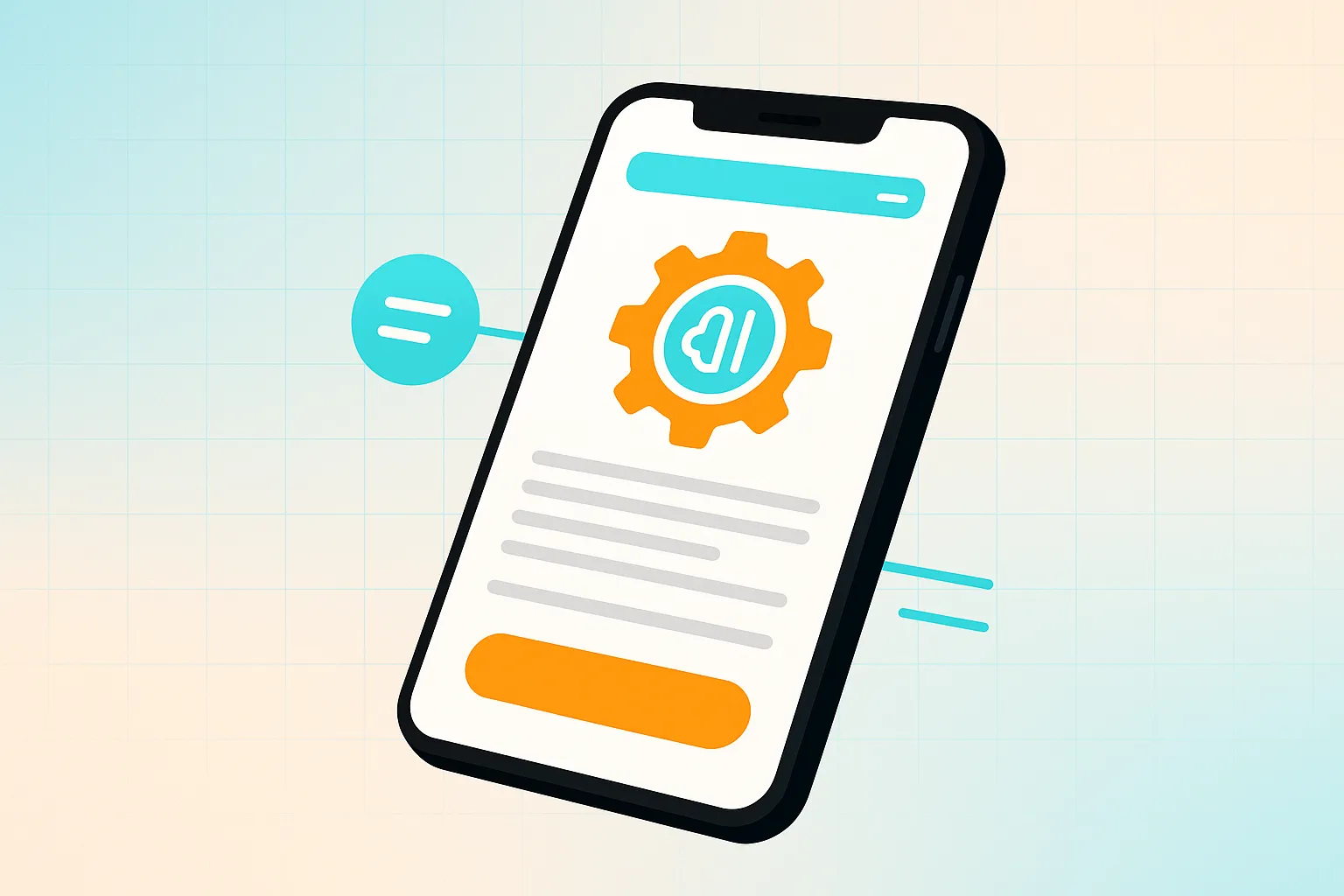In the relentless race to deliver value, the speed and reliability of software deployment have become critical differentiators. For years, the DevOps movement, with its principles of Continuous Integration and Continuous Deployment (CI/CD), has been the primary engine for accelerating this process. CI/CD pipelines have automated the tedious, error-prone manual steps of building, testing, and releasing software, allowing engineering teams to ship code with unprecedented frequency. Yet, even the most mature pipelines have their limits. Flaky tests, complex release orchestration, elusive security vulnerabilities, and the dreaded post-deployment incident remain persistent challenges that can slow momentum and erode user trust.
The next evolutionary leap in deployment automation is here, and it is powered by Artificial Intelligence. AI is moving beyond the realm of consumer applications and into the core of the software development lifecycle (SDLC). By applying machine learning models to the vast datasets generated by development processes, organizations can transform their CI/CD pipelines from rigid, pre-programmed workflows into intelligent, adaptive systems. These systems can anticipate problems, optimize processes, and make data-driven decisions in real-time, pushing the boundaries of what’s possible in terms of both speed and stability.
This article explores the most impactful applications of AI in deployment automation. We will delve into how AI is revolutionizing testing, predicting change failures, orchestrating complex releases, and bolstering security within the CI/CD pipeline. Furthermore, we will examine the tangible benefits of this transformation—measured in increased deployment frequency and drastically reduced failure rates—and discuss how partnering with an experienced AI development agency can help you navigate this new frontier. The goal is no longer just to automate deployments, but to make them intelligent.
The Modern CI/CD Pipeline: A Foundation Ready for Intelligence
Before we explore how AI is reshaping the deployment landscape, it is essential to appreciate the foundation upon which it builds. The CI/CD pipeline is the backbone of modern software delivery, a highly automated workflow that shepherds code from a developer’s local machine to a live production environment.
The Core Stages of CI/CD
A typical pipeline consists of several distinct stages, each serving a critical function:
- Commit: A developer commits code changes to a version control system like Git. This action triggers the pipeline.
- Build: The source code is compiled into an executable artifact. If the build fails, the pipeline stops, and the developer is notified immediately.
- Test: The artifact is subjected to a gauntlet of automated tests. This usually includes:
- Unit Tests: Verifying individual functions or components in isolation.
- Integration Tests: Ensuring different parts of the application work together correctly.
- End-to-End Tests: Simulating user workflows to validate the application as a whole.
- Deploy: If all tests pass, the artifact is deployed to an environment. This could be a staging environment for further testing or directly to production.
- Monitor: After deployment, the application is monitored for errors, performance degradation, and other issues.
This automated, sequential process provides a fast feedback loop, allowing teams to catch bugs early, integrate code frequently, and release features to users with confidence. However, persistent challenges remain.
Lingering Pains in a Mature DevOps World
Even organizations with sophisticated CI/CD pipelines encounter friction that slows delivery and introduces risk. These pain points represent the most fertile ground for AI-driven innovation:
- Test Suite Bloat and Flakiness: As applications grow, test suites can become massive, taking significant time to run. “Flaky” tests—those that pass or fail intermittently without any code changes—can erode trust in the automation and cause developers to waste time investigating non-existent issues.
- The Quality Gate Dilemma: Pipelines rely on “quality gates”—predefined criteria that must be met for a change to proceed. These are often static and binary (e.g., 90% code coverage, zero critical static analysis warnings). They lack the context to differentiate between a low-risk documentation change and a high-risk modification to a core authentication service.
- Risky “Big Bang” Deployments: While CI/CD encourages small, frequent releases, coordinating deployments for complex, microservice-based architectures can still be challenging. This can lead to risky, all-or-nothing deployments where a single faulty component can bring down the entire system.
- Post-Deployment Blind Spots: Traditional monitoring relies on predefined alerts and dashboards. A subtle performance degradation or a spike in a non-critical error metric might go unnoticed until it escalates into a major incident, often long after the responsible deployment has occurred.
These challenges highlight the limitations of rule-based automation. The next wave of improvement requires a shift from simply executing predefined steps to learning from past outcomes and adapting to new information. This is precisely where AI makes its mark.
Where AI Makes the Biggest Impact on Deployments
Integrating AI into the CI/CD pipeline is not about replacing the existing framework but augmenting it with intelligence at critical junctures. By analyzing historical and real-time data, AI can optimize testing, predict risks, and automate complex decision-making, leading to a more resilient and efficient deployment process. According to our research for the 2025 AI-Enablement Benchmark Report, while CI/CD and Deployment currently have the lowest AI adoption rate among engineering phases (39%), teams that do leverage AI see a staggering 48% increase in deployment frequency. This represents a massive, largely untapped opportunity for competitive advantage.
AI-Powered Testing and Quality Assurance
The testing phase is often the biggest bottleneck in the pipeline. AI can dramatically reduce this friction by making testing smarter and more efficient.
- Intelligent Test Selection: Instead of running the entire test suite for every minor change, AI models can analyze the code changes and predict which specific tests are most relevant and most likely to fail. This “test impact analysis” allows the pipeline to prioritize the most critical tests, providing developers with faster feedback without sacrificing coverage.
- Automated Test Generation: AI tools can analyze an application’s code and user interface to automatically generate new test cases. This is particularly powerful for identifying edge cases and unexpected user paths that human testers might overlook, thereby increasing the robustness of the application.
- Visual Regression Testing: For user-facing applications, ensuring a consistent and bug-free UI is paramount. We have experience implementing cutting-edge computer vision AI, such as in our work on the G-Sight app. Similar technology can be applied to deployments. AI-powered tools can take screenshots of an application before and after a change, using computer vision to identify even pixel-level unintended visual changes, from a misaligned button to an incorrect font rendering.
- Flaky Test Detection: Machine learning algorithms can analyze historical test results to identify and quarantine flaky tests. By distinguishing between genuine failures and intermittent noise, AI helps maintain the integrity of the CI/CD signal, ensuring that a red build truly indicates a problem that needs a developer’s attention.
Intelligent Change Failure Prediction
One of the most transformative applications of AI in DevOps is the ability to predict the risk of a given change before it is deployed. By training a model on historical data—such as code complexity, author history, associated work items, past test results, and previous production incidents—AI can assign a “risk score” to every new pull request.
This score allows the pipeline to become dynamic and context-aware.
| Risk Level | Pipeline Action |
|---|---|
| Low Risk | A simple change to a README file or a typo fix in a UI string. |
| Medium Risk | A feature enhancement in a well-tested part of the application. |
| High Risk | A refactoring of a critical service with many dependencies. |
This moves teams away from one-size-fits-all quality gates and towards an intelligent, risk-adjusted approach to software delivery.
Automated Canary and Blue-Green Deployments
Progressive delivery strategies like canary releases and blue-green deployments are designed to minimize the impact of a failed deployment. However, the manual analysis required to validate these releases can be a bottleneck. AI automates and supercharges this process.
In an AI-driven canary analysis, a new version of the application is released to a small subset of users. The AI system then monitors a wide array of real-time metrics from both the new (canary) and old (baseline) versions. This goes far beyond simple CPU and error rate checks. The AI analyzes:
- Technical Metrics: Latency, error rates, resource consumption.
- Business Metrics: Conversion rates, user engagement, shopping cart abandonment.
- User Sentiment: (If available) Analysis of feedback or support tickets.
The AI model learns the normal patterns and correlations between these metrics. It can detect subtle anomalies that would be invisible to a human operator looking at a dashboard. If the canary version shows any sign of degradation, the system can automatically trigger a rollback. If it performs as expected or better, it can gradually and automatically increase traffic, leading to a full rollout. This provides a robust safety net, allowing teams to deploy with high velocity and even higher confidence.
Building the Future of Deployment with MetaCTO
Understanding the potential of AI in deployment automation is one thing; successfully implementing it is another. Integrating these intelligent systems requires a unique blend of expertise in software engineering, DevOps practices, and machine learning. This is not just about plugging in a new tool; it is about fundamentally re-architecting the delivery pipeline around data and intelligence.
At MetaCTO, we specialize in precisely this intersection. Our Ai Development services are designed to bring sophisticated AI technology into your business, making every process—including software deployment—faster, better, and smarter. We have deep experience integrating complex AI technologies, from the computer vision systems we implemented for the G-Sight app to the AI-powered transcription and corrections we built for the Parrot Club app. This practical, hands-on experience allows us to move beyond theory and deliver real-world solutions.
Many organizations find that their initial forays into AI can lead to “AI code chaos.” Our Vibe Code Rescue service is specifically designed to address this, helping teams turn tangled experiments into a solid foundation for growth and scalable automation.
Successfully leveraging AI is a journey of maturity. A team just beginning to explore AI has very different needs than one ready for a fully integrated, strategic implementation. We developed the AI-Enabled Engineering Maturity Index as a framework to help organizations understand where they are on this journey. By assessing your team’s current state, we can help you build a pragmatic, actionable roadmap to advance from a reactive or experimental approach to a truly strategic, AI-first culture. An expert partner can help you sidestep common pitfalls and accelerate your path to a more intelligent and efficient deployment pipeline.
Conclusion: From Automated to Intelligent Deployment
The evolution of software delivery is clear: the future belongs to teams that can not only ship code quickly but also do so with intelligence and resilience. AI is the catalyst for this transformation, upgrading the CI/CD pipeline from a static assembly line into a dynamic, self-optimizing system. By embedding AI into testing, risk assessment, release orchestration, and monitoring, engineering teams can break through existing performance plateaus.
We have explored how AI-powered tools are creating a paradigm shift, enabling organizations to increase deployment frequency while simultaneously reducing change failure rates. This dual improvement translates directly into a powerful competitive advantage: the ability to deliver more value to users, faster and more reliably than ever before. It allows teams to innovate with confidence, knowing that a robust, intelligent safety net is in place to catch issues before they impact customers.
The journey towards an AI-driven deployment pipeline requires both strategic vision and deep technical expertise. If you are ready to move beyond traditional CI/CD and unlock the next level of engineering efficiency, the time to start is now. Talk with an AI app development expert at MetaCTO to assess your team’s maturity and build a customized roadmap for infusing your deployment process with the power of artificial intelligence.

